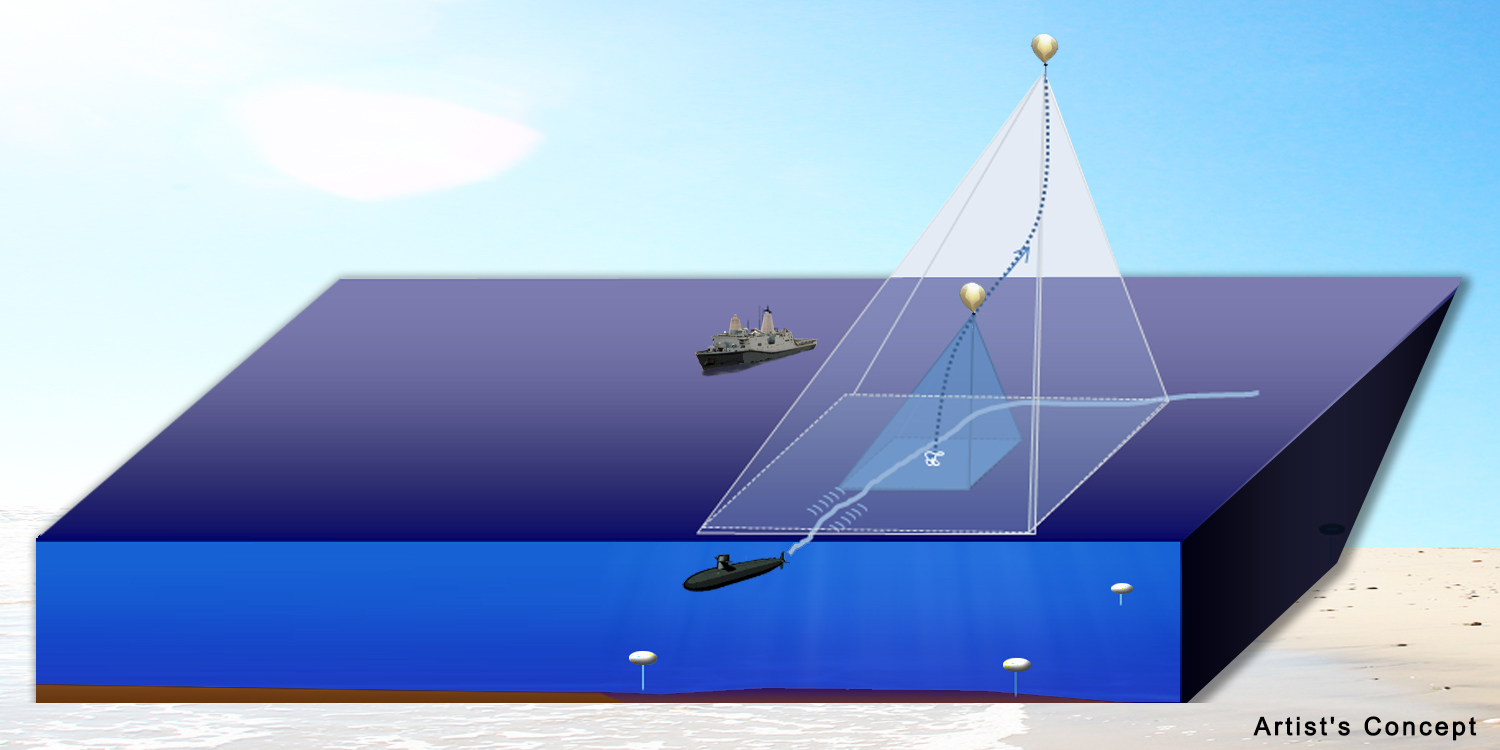
The Navy’s endless push to build cheaper ships alarmed Rep. Pete Visclosky, D-Ind., at a House hearing Tuesday. “You mention that we’re hitting a cost target,” he told the Navy brass about one class of vessels. “But if the ship’s not survivable, I don’t care if I meet my cost target if it’s in the bottom of the ocean.”
Bingo!
That’s exactly where the Pentagon is looking to build underwater mini-depots for the U.S. Navy. In fact, only hours after Visclosky grumbled about sunken ships sitting on the bottom of the ocean, the Pentagon said it’s moving closer to making that cold and forbidding place a base for U.S. military hardware. It’s planning to test the concept in the Western Pacific, conveniently close to China, starting next year.
“The approach centers on pre-deploying deep-ocean nodes years in advance in forward areas which can be commanded from standoff to deliver a wide range of unmanned and distributed systems to the sub-surface, surface, and air,” the Pentagon says. “The node must survive at greater than 6 km [3.7 miles] of depth, last up to 5 years, and operate in less than two hours after commanded to launch from the seafloor.” The system is designed for the world’s maritime hotspots, where cost and complexity limit how many ships the Navy can deploy.
In a nutshell, the Pentagon wants to seed potential hotspots with equipment—including small drones and other reconnaissance gear—in capsules rooted on the ocean floor under at least 4 kilometers (2.5 miles) of water. That’s nearly 50% of the world’s oceans, and “provides a vast area for concealment and storage,” according to the Defense Department. These nodes would “hibernate”—that’s the word the Pentagon uses—until roused from their “dormancy” by signals from the U.S. military. They would then rise to the surface, which is why the Pentagon calls it the “Upward Falling Payloads” program. Then their payloads would deploy into the sky or water.
Pentagon engineers believe “the cost to an adversary to retrieve a properly designed UFP node is asymmetric with the cost to produce and distribute them on the seafloor,” making it a bargain for the deployer. It’s the ultimate in “cheap stealth,” according to the Defense Advanced Projects Research Agency, the Pentagon office in charge. “The trick is to show how these systems offer lower-cost alternatives to traditional approaches, and that they scale well to large open-ocean areas,” DARPA program manager Andy Coon said Wednesday.
Early node designs contained “risers” made of metal, ceramic or plastic, capable of handling payloads up to four feet long and 17 inches in diameter and 200 pounds. “Some risers were multi-launch systems whereas others were single-launch units,” DARPA says. The Pentagon plans on awarding several contracts totaling $38 million to develop and demonstrate the technologies involved. There are no details available on how many nodes the Pentagon might want, where they might be planted, how much they might cost and how they would be put into place.
DARPA said the nodes’ payloads would be used for “operational support and situational awareness” when it said it was exploring the concept more than a year ago.
“To make this work, we need to address technical challenges like extended survival of nodes under extreme ocean pressure, communications to wake-up the nodes after years of sleep, and efficient launch of payloads to the surface,” Coon said at the time. “We are simply offering an alternative path to realize these missions without requiring legacy ships and aircraft to launch the technology, and without growing the reach and complexity of unmanned platforms.”
Payloads could include “waterborne or airborne cameras, sensors, decoys, network nodes, beacons, jammers, [and] obscurants,” DARPA said in its initial January 2013 outline:
Depending on the specific payload, systems would provide a range of non-lethal but useful capabilities such as situational awareness, disruption, deception, networking, rescue, or any other mission that benefits from being pre-distributed and hidden. An example class of systems might be small unmanned aerial vehicles (UAVs) that launch to the surface in capsules, take off and provide aerial situational awareness, networking or decoy functions.
That original summary of the program repeatedly declared the nodes’ payloads would be “non-lethal.” Details on the second and third phases of the effort, released Tuesday, do not contain that restriction. That omission was inadvertent, not ominous, Coon said.
More Must-Reads from TIME
- Cybersecurity Experts Are Sounding the Alarm on DOGE
- Meet the 2025 Women of the Year
- The Harsh Truth About Disability Inclusion
- Why Do More Young Adults Have Cancer?
- Colman Domingo Leads With Radical Love
- How to Get Better at Doing Things Alone
- Michelle Zauner Stares Down the Darkness
Contact us at letters@time.com